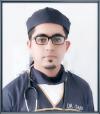What Do My CT Scan Reports Indicate?

Question: I will copy and paste my 2 cat scans. What I WANT to know is this: On the second ct, it says COMPARISON; None. What I am interested in knowing is if there was NO comparison with anything to the other ct scan. I am mostly interested in the artery disease part and if I should be concerned. 2 Doctors do not seem to be concerned.
CT scan 1
CLINICAL INFORMATION: Abdominal pain. Cholelithiasis. Prior
pancreatitis. Assess for pancreatic pseudocyst. Prior hysterectomy.
COMPARISON: Right upper quadrant ultrasound 8/2/2015.
TECHNIQUE: Following the administration of 100ml IV of Omnipaque 350
, helical images were obtained through the abdomen and pelvis using
2.5mm thick reconstructions. Sagittal and coronal re-formations were
subsequently performed.
FINDINGS:
Normal heart size. Minimal atelectasis in the dependent lung bases. No
effusions.
Normal appearance of the liver, spleen with adjacent splenule, and
adrenal glands.
Mildly dilated gallbladder measuring 8.7 cm in long axis. Minimal
prominence of the bile ducts. No intraluminal filling defects.
Mild to moderate diffuse edema of the pancreas with surrounding fluid
and stranding. No focal fluid collections.
Tiny bilateral renal cortical low attenuation lesions, too small to
characterize but most likely cysts. No acute genitourinary pathology.
Postsurgical absence of the uterus. Nonidentified ovaries.
Unremarkable noncontrast evaluation of the stomach and small bowel.
Normal appendix.
Normal caliber colon. Mildly prominent appearance of the walls of the
mid transverse colon through the descending colon, with part of the
splenic flexure coursing near the peripancreatic inflammation. No
adjacent inflammation elsewhere.
No free air. Aortoiliac atherosclerotic disease without aneurysm. No
abdominal wall hernia. No pathologic adenopathy on the basis of CT
size criteria.
Mild scoliosis. Prominent L5-S1 degenerative disc disease. Less
pronounced degenerative changes at other levels. No acute or
suspicious osseous abnormalities.
IMPRESSION:
1. ACUTE PANCREATITIS. NO ORGANIZED FLUID COLLECTIONS.
2. MILDLY DILATED GALLBLADDER WITH MINIMAL PROMINENCE OF THE BILE
DUCTS. NO IDENTIFIED FILLING DEFECTS.
3. QUESTION OF MILD COLITIS, POSSIBLY SECONDARY.
4. POST HYSTERECTOMY.
CT Scan 2:
CLINICAL INFORMATION: Lower abdominal pain with history of
laparoscopic cholecystectomy 2 months ago. History of hysterectomy.
COMPARISON: None
TECHNIQUE: Helical axial CT images were obtained following the
uneventful administration of 100ml Omnipaque 350 using 3 mm thick
reconstructions. Sagittal and coronal re-formations were subsequently
performed.
FINDINGS:
There is scar versus subsegmental atelectasis within the right middle
lobe.
The liver is free of focal abnormalities. The patient is status post
cholecystectomy.
The pancreas, spleen and adrenal glands demonstrate no discrete
abnormalities.
There is an approximately 8 mm cyst within the lower pole of the left
kidney.
There are mild atherosclerotic changes within the abdominal aorta and
its branches.
The small bowel and colon demonstrate no significant dilatation,
mesenteric stranding or wall thickening.
There is no significant free fluid within the abdomen or pelvis. The
patient is status post hysterectomy.
IMPRESSION:
1. NO CONVINCING CT EVIDENCE FOR ACUTE INTRA-ABDOMINAL OR INTRAPELVIC
ABNORMALITY.
2. STATUS POST CHOLECYSTECTOMY AND HYSTERECTOMY.
Is the Radiologist saying they see only MILD changes or are they saying they see mild changes since the other CT scan? Comparison says None.
CT scan 1
CLINICAL INFORMATION: Abdominal pain. Cholelithiasis. Prior
pancreatitis. Assess for pancreatic pseudocyst. Prior hysterectomy.
COMPARISON: Right upper quadrant ultrasound 8/2/2015.
TECHNIQUE: Following the administration of 100ml IV of Omnipaque 350
, helical images were obtained through the abdomen and pelvis using
2.5mm thick reconstructions. Sagittal and coronal re-formations were
subsequently performed.
FINDINGS:
Normal heart size. Minimal atelectasis in the dependent lung bases. No
effusions.
Normal appearance of the liver, spleen with adjacent splenule, and
adrenal glands.
Mildly dilated gallbladder measuring 8.7 cm in long axis. Minimal
prominence of the bile ducts. No intraluminal filling defects.
Mild to moderate diffuse edema of the pancreas with surrounding fluid
and stranding. No focal fluid collections.
Tiny bilateral renal cortical low attenuation lesions, too small to
characterize but most likely cysts. No acute genitourinary pathology.
Postsurgical absence of the uterus. Nonidentified ovaries.
Unremarkable noncontrast evaluation of the stomach and small bowel.
Normal appendix.
Normal caliber colon. Mildly prominent appearance of the walls of the
mid transverse colon through the descending colon, with part of the
splenic flexure coursing near the peripancreatic inflammation. No
adjacent inflammation elsewhere.
No free air. Aortoiliac atherosclerotic disease without aneurysm. No
abdominal wall hernia. No pathologic adenopathy on the basis of CT
size criteria.
Mild scoliosis. Prominent L5-S1 degenerative disc disease. Less
pronounced degenerative changes at other levels. No acute or
suspicious osseous abnormalities.
IMPRESSION:
1. ACUTE PANCREATITIS. NO ORGANIZED FLUID COLLECTIONS.
2. MILDLY DILATED GALLBLADDER WITH MINIMAL PROMINENCE OF THE BILE
DUCTS. NO IDENTIFIED FILLING DEFECTS.
3. QUESTION OF MILD COLITIS, POSSIBLY SECONDARY.
4. POST HYSTERECTOMY.
CT Scan 2:
CLINICAL INFORMATION: Lower abdominal pain with history of
laparoscopic cholecystectomy 2 months ago. History of hysterectomy.
COMPARISON: None
TECHNIQUE: Helical axial CT images were obtained following the
uneventful administration of 100ml Omnipaque 350 using 3 mm thick
reconstructions. Sagittal and coronal re-formations were subsequently
performed.
FINDINGS:
There is scar versus subsegmental atelectasis within the right middle
lobe.
The liver is free of focal abnormalities. The patient is status post
cholecystectomy.
The pancreas, spleen and adrenal glands demonstrate no discrete
abnormalities.
There is an approximately 8 mm cyst within the lower pole of the left
kidney.
There are mild atherosclerotic changes within the abdominal aorta and
its branches.
The small bowel and colon demonstrate no significant dilatation,
mesenteric stranding or wall thickening.
There is no significant free fluid within the abdomen or pelvis. The
patient is status post hysterectomy.
IMPRESSION:
1. NO CONVINCING CT EVIDENCE FOR ACUTE INTRA-ABDOMINAL OR INTRAPELVIC
ABNORMALITY.
2. STATUS POST CHOLECYSTECTOMY AND HYSTERECTOMY.
Is the Radiologist saying they see only MILD changes or are they saying they see mild changes since the other CT scan? Comparison says None.
Brief Answer:
only mild thickening of aorta
Detailed Answer:
Welcome at HCM
I am Dr Saad Sultan and will be answering your query.. I have read and understood your health concerns.
The first CT scan was done showing only pancreatitis with little fluid around it.
In second CT scan , which was done after removal of gall bladder, showing no significant pathology. Pancreas is normal in second one.
The only difference between these two is in arteries. There is atherosclerosis ( thickening due to fats) of aorta in second scan. This is the only change being noted in these two.
You should consult vascular surgeon for it.
Hope it helps
Regards
Dr Saad Sultan
only mild thickening of aorta
Detailed Answer:
Welcome at HCM
I am Dr Saad Sultan and will be answering your query.. I have read and understood your health concerns.
The first CT scan was done showing only pancreatitis with little fluid around it.
In second CT scan , which was done after removal of gall bladder, showing no significant pathology. Pancreas is normal in second one.
The only difference between these two is in arteries. There is atherosclerosis ( thickening due to fats) of aorta in second scan. This is the only change being noted in these two.
You should consult vascular surgeon for it.
Hope it helps
Regards
Dr Saad Sultan
Above answer was peer-reviewed by :
Dr. Yogesh D


You didn't answer my question at all. I am charged money to ask a question and you certainly didn't answer my question. The second CT scan says NO COMPARISON. So, was the "mild change" what they saw on scan or was it compared to the other CT scan regarding the arteries? Should I be concerned?
Brief Answer:
No comparison was made with previous scan
Detailed Answer:
Welcome at HCM
I really appreciate your follow up..
As far as your CT reporting is concerned , while reporting the second scan radiologist didn't compare it with previous one, that's why they mentioned "COMPARISON NONE"..
The important thing for you is mild atherosclerosis. It doesn't matter whether it was present previously or not. It is present now and this thing matters. You should consult vascular surgeon for it.
There is need to check your lipid profile .
Hope it clears things.
If you still have any query feel free to ask any time.
Regards
Dr Saad Sultan
No comparison was made with previous scan
Detailed Answer:
Welcome at HCM
I really appreciate your follow up..
As far as your CT reporting is concerned , while reporting the second scan radiologist didn't compare it with previous one, that's why they mentioned "COMPARISON NONE"..
The important thing for you is mild atherosclerosis. It doesn't matter whether it was present previously or not. It is present now and this thing matters. You should consult vascular surgeon for it.
There is need to check your lipid profile .
Hope it clears things.
If you still have any query feel free to ask any time.
Regards
Dr Saad Sultan
Above answer was peer-reviewed by :
Dr. Vaishalee Punj


Here is my lipid: (without fasting) Blood test taken in November by my Doctor.
Cholesterol Total 195; Triglycerides 285; HDL Cholesterol 33; VLDL Cholesterol Cal 57; LDL Cholesterol 105; LDL/HDL Ratio 3.2.
Is there medication for this? I have been taking hawthorne and gingko. That ok? Is this going to kill me?
The other Doctor that I conversed with was very informative. (on this site)
Cholesterol Total 195; Triglycerides 285; HDL Cholesterol 33; VLDL Cholesterol Cal 57; LDL Cholesterol 105; LDL/HDL Ratio 3.2.
Is there medication for this? I have been taking hawthorne and gingko. That ok? Is this going to kill me?
The other Doctor that I conversed with was very informative. (on this site)
Brief Answer:
need to start lipid lowering drugs
Detailed Answer:
Welcome at HCM...
I really appreciate your health concerns...
There is need to repeat the lipid profile on fasting state. On basis of this report , your triglyceride are raised and good cholesterol ( HDL) is low and bad cholesterol ( LDL) is high.
The medicine which you are taking doesn't have much effect on it. Hawthorn plant do have beneficial effect on heart but clinical data in form of research is lacking. Gingko is good for brain.
If I am your attending physician I will prescribe you LIPID LOWERING DRUGS from STATIN FAMILY like simvastatin or atorvastatin for improving your lipid profile status.
As far as risks are concerned , yes it need to be treated . There is need to look at your heart (through ECG and ECHO) And peripheral arteries (via Duplex scan of your arms , legs and carotid arteries).
Plz do consult vascular surgeon once so that you can be clinically properly assessed.
Hope it helps
Regards
Dr Saad Sultan
need to start lipid lowering drugs
Detailed Answer:
Welcome at HCM...
I really appreciate your health concerns...
There is need to repeat the lipid profile on fasting state. On basis of this report , your triglyceride are raised and good cholesterol ( HDL) is low and bad cholesterol ( LDL) is high.
The medicine which you are taking doesn't have much effect on it. Hawthorn plant do have beneficial effect on heart but clinical data in form of research is lacking. Gingko is good for brain.
If I am your attending physician I will prescribe you LIPID LOWERING DRUGS from STATIN FAMILY like simvastatin or atorvastatin for improving your lipid profile status.
As far as risks are concerned , yes it need to be treated . There is need to look at your heart (through ECG and ECHO) And peripheral arteries (via Duplex scan of your arms , legs and carotid arteries).
Plz do consult vascular surgeon once so that you can be clinically properly assessed.
Hope it helps
Regards
Dr Saad Sultan
Above answer was peer-reviewed by :
Dr. Raju A.T

Answered by

Get personalised answers from verified doctor in minutes across 80+ specialties



